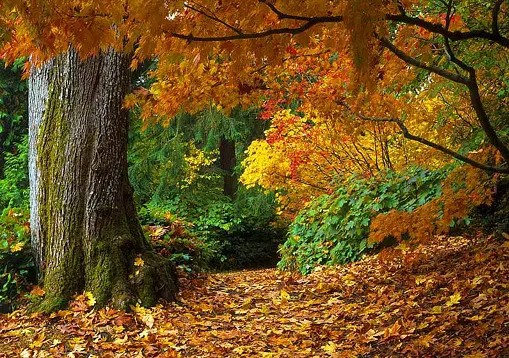Adverts
Exploring the forest is a fascinating adventure, where each step reveals a hidden world full of ancient stories and trails to be discovered. The footprints left by animals are not just marks on the ground; they are clues to a vibrant universe full of life that exists far from human eyes. This practical guide was created for those who want to delve into the art of identifying and understanding wildlife simply by observing the tracks left on the ground. 🌿🦌
Adverts
Identifying footprints can seem challenging at first, but with a little guidance and practice, you can unlock the secret world of forest creatures. This guide will cover techniques for recognizing different types of footprints, from the subtle marks of rodents to the impressive tracks of large mammals. Details about the size, shape and spacing of footprints will be discussed, offering valuable insights into the behavior and habits of animals.
Adverts
Understanding tracks not only enhances knowledge about local biodiversity, but also increases connection with nature, fostering a deeper respect for the environment. Get ready to embark on an enriching journey, where each footprint is a gateway to wildlife and its hidden stories, waiting to be unraveled. 🌲🐾
The Art of Reading Footprints: A Look Behind the Veil of Nature
Imagine yourself walking along a path covered in dry leaves, where sunlight barely penetrates the dense canopy of trees. The wind whispers ancient stories, and the air is filled with mystery. It is in this enchanting setting that the skill of reading footprints comes to the fore. Each mark on the ground is a mystery, a signature left by creatures that inhabit the shadows of the forest. Learning to identify these footprints is like opening a book of mysteries, where each page reveals secrets kept by nature.
The practice of tracking footprints is ancient, used by hunters and explorers to understand animal behavior. Today, this skill is an invitation to immerse yourself in the wild without disturbing it, observing from afar the dance of life that unfolds beneath your feet. Identifying footprints is not just a matter of recognizing shapes; it is about interpreting signs, feeling the texture of the ground, perceiving nuances. Like a detective searching for clues, you will become part of the forest’s plot, understanding its rhythm and its hidden stories.
Tracking Tools: What You Need to Know
Before you venture into reading footprints, it is essential to understand what to look for and how to interpret the signs. The first tool is, without a doubt, your own eyesight. Training your vision to notice subtle details is crucial. Footprints vary in size, shape and depth, and each of these characteristics can tell a different story. A careful eye can distinguish a fresh footprint from an old one, or notice variations caused by different types of soil.
In addition to your eyesight, a good footprint guide can be your ally. There are several guides available that illustrate footprints of different species, offering valuable information about common patterns. However, remember that nature is unpredictable, and footprints will not always follow the pattern in the books. This is where your ability to interpret and adapt comes into play. Constant practice and experience are your best allies.
Finally, don’t underestimate the importance of a good flashlight for nighttime walks and a ruler to measure footprints. These little accessories can be the difference between a guess and an accurate identification. Always be prepared, because the forest is a stage for surprises and enigmas, waiting to be solved.
Identifying Mammals: Marks that Tell Stories
Mammals are perhaps the most intriguing when it comes to tracking footprints. Their marks vary widely, from the delicate traces of a rabbit to the powerful paw prints of a bear. When you find a mammal footprint, pay attention to the number of toes, the shape of the claws, and the presence of pads. Each of these elements offers clues about the animal that passed by.
For example, a deer leaves an unmistakable footprint with two heart-shaped main toes and sometimes smaller marks behind them left by the lateral toes. A wolf, on the other hand, with its long, narrow footprints, clearly shows its claws, indicating its predatory nature. A bear's footprints are wider and deeper, with prominent claws and a visibly marked footpad.
Also, pay attention to their walking patterns. Mammals like foxes and wildcats tend to walk in straight lines, minimizing noise and maximizing efficiency. This characteristic can help you tell species apart, even when their footprints are similar. Immerse yourself in the narrative left by these forest dwellers, and let your imagination fill in the story.
Birds: The Subtleties of Avian Footprints
Birds, with their subtle footprints, are truly enigmatic to decipher. Unlike mammals, their footprints are usually shallow, and the details can easily be erased by rain or wind. However, with a trained eye, it is possible to identify distinct patterns.
Pay attention to the number of toes and the direction of the claws. Birds such as pigeons and doves leave marks with three toes pointing forward and one pointing back, forming a sort of Y. Birds of prey, such as eagles, may leave deeper and more widely spaced claw marks, indicating their power and size.
Additionally, bird behavior can be inferred from footprints. Some species, such as guinea fowl, leave zig-zag marks, reflecting their agitated behavior as they walk in search of food. Understanding these patterns is like deciphering a treasure map, with each step revealing new insights into avian life.
Reptiles and Amphibians: Footprints from the Whispering Kingdom
Unlike mammals and birds, reptiles and amphibians leave footprints that often go unnoticed. The marks are subtle, often interspersed with tracks left by tails or dragged bodies. However, once you learn to read them, these footprints open doors to a world of mysteries and creatures that move almost silently.
Reptiles, such as snakes, often leave winding trails, while lizards may leave distinct toe prints, often accompanied by a central feature, the tail. Amphibians, such as frogs and toads, leave marks that may look like simple splashes in damp soil, but with a closer look, you can discern the outlines of tiny fingers and webs.
Interpreting these footprints requires patience and a willingness to notice the smallest of details. Pay attention to the conditions of the ground, as soft ground can reveal more details than dry, hard ground. And remember, in the forest, silence speaks louder than words, and the tracks left by these creatures are a silent dance between the visible and the invisible.
Practicing in Nature: Where and How to Start?
Now that you’re equipped with the basic knowledge, it’s time to put it into practice. Choosing the right location is essential for a successful tracking experience. Natural parks, forest reserves, and uncrowded trails are great options to start your journey. Remember, nature is an open book, but its pages should be turned with care and respect.
When walking through the forest, move slowly and quietly. Avoid disturbing the forest with hurried or noisy footsteps. Pay attention not only to the ground, but also to your surroundings. Footprints may be accompanied by other signs, such as droppings, food remains, or marks on trees. Each of these elements adds a layer to the puzzle you are trying to solve.
Keep a field journal to record your discoveries and, if possible, take photos of the footprints you find. This practice not only helps improve your identification skills, but also contributes to wildlife conservation by recording the presence of species in different areas. And above all, remember that the forest is a place of harmony and balance. Respect its rules and marvel at the secrets it has to offer.
Safety and Ethics: Respecting the Wild Habitat
When exploring wildlife through footprints, it is vital to adopt practices that ensure the safety of both you and the animals. The forest is home to the creatures we track, and our role is to observe without interfering. Respecting this balance is essential to preserving ecosystems and ensuring that future generations can enjoy the same magical experience.
First, always let someone know your itinerary before heading out on a tracking adventure, especially in remote areas. Safety equipment, such as a first aid kit and a map of the area, are essential. Be aware that some areas may be home to dangerous animals, and it’s crucial to keep a safe distance if you encounter one.
From an ethical standpoint, never remove or alter footprints. They are living evidence of animal behavior and are invaluable to biologists and conservationists. Also, avoid feeding wild animals or leaving waste in their habitat. Nature has its own way of maintaining balance, and our interference can have disastrous consequences.
By following these guidelines, you will not only protect yourself, but you will also contribute to nature conservation. The forest, with its mysteries and secrets, is a place that deserves to be respected and preserved. 🦊🌿
Conclusion
In conclusion, exploring wildlife through footprints is a fascinating adventure that connects you directly to nature. Identifying animals through their tracks not only improves your observation skills, but also provides a deeper understanding of ecosystems. 🌿 This practical guide serves as a gateway to a world full of curiosities and challenges.
Furthermore, by learning to recognize animal footprints, you contribute to the conservation of biodiversity by increasing awareness of the presence and behavior of local fauna. This knowledge is crucial as it can guide conservation actions and help prevent conflicts between humans and animals.
By adopting this practice, you become an active advocate for nature. After all, each footprint tells a unique story, revealing details about the animal’s size, species, and even emotional state. With this guide, you are equipped to decipher these mysteries and share your discoveries with other nature enthusiasts.
In short, don’t underestimate the power of footprints. They are more than just marks on the ground; they are living testaments to the complexity and beauty of the natural world. With this knowledge in hand, your next walk in the forest will be an even more enriching and exciting experience. 🐾




